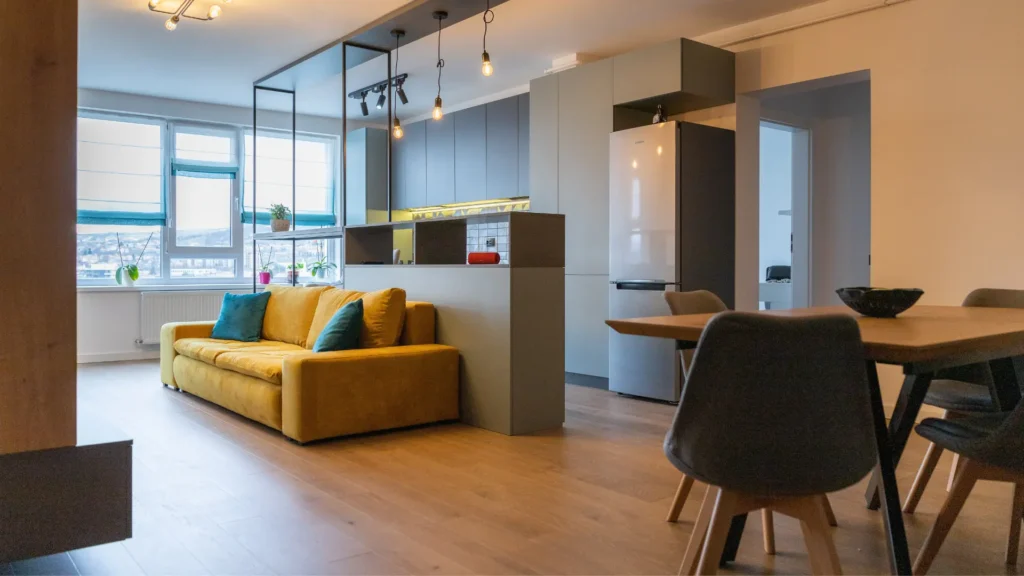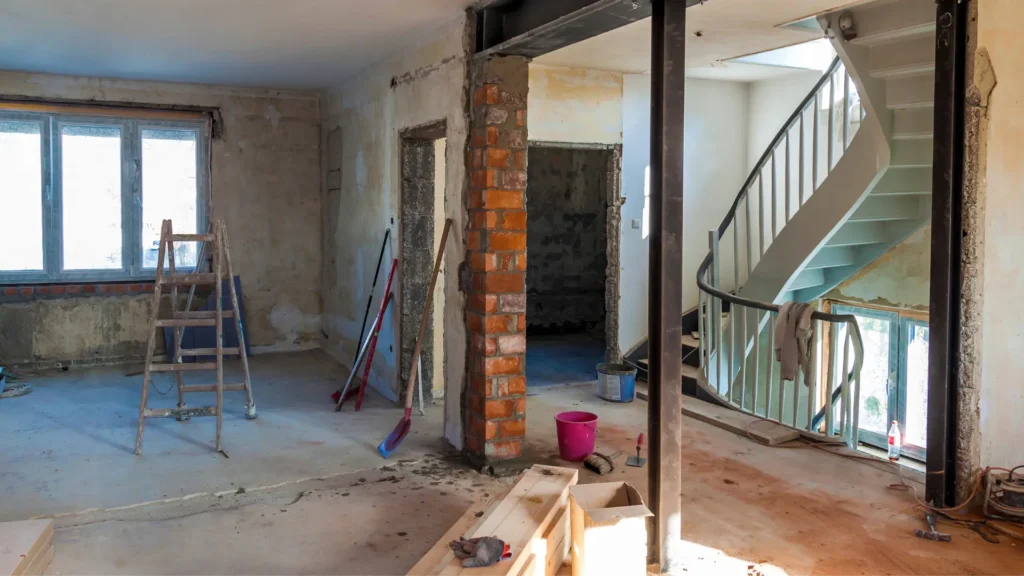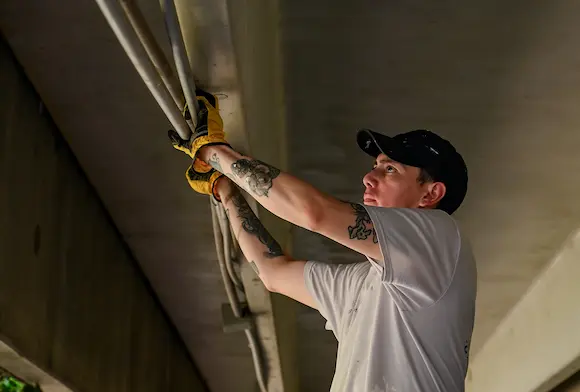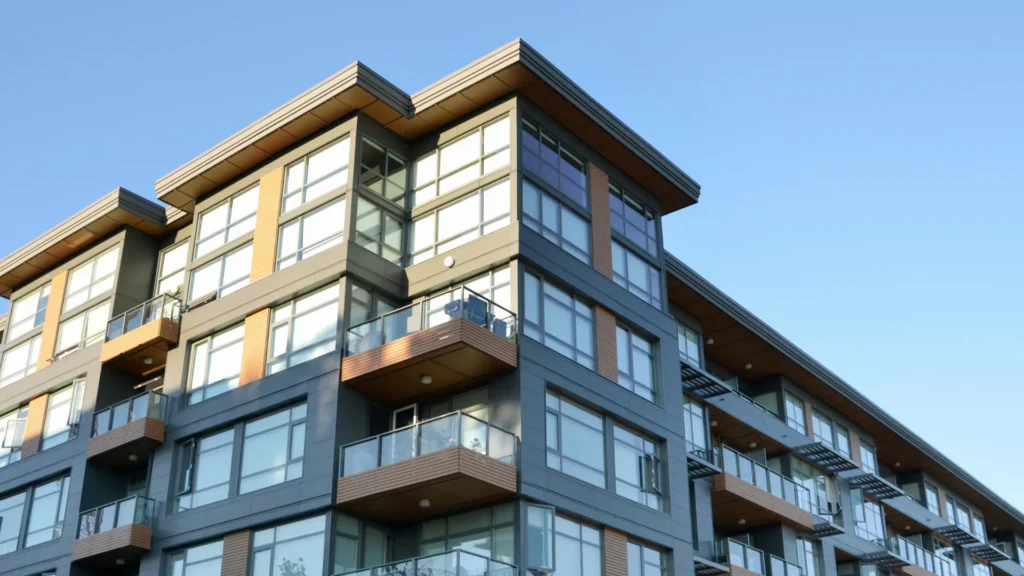Renovating affordable housing is no small task — especially when HUD inspections, funding rules, and resident safety are on the line. A well-planned apartment renovation does more than refresh interiors; it protects compliance, boosts long-term ROI, and creates safer, healthier homes for residents.
At NSPIRE Experts, we specialize in guiding property owners and managers through HUD-compliant renovations that keep you inspection-ready year-round.

Why Apartment Renovation Matters for HUD Housing
Across the U.S., aging affordable housing developments face growing repair backlogs and stricter compliance standards. According to the National Low Income Housing Coalition, over 10,000 public housing units are lost every year because of unaddressed capital needs.
That’s why an apartment renovation isn’t just about upgrading finishes — it’s about preserving affordable housing stock, maintaining HUD funding, and ensuring tenant well-being.
When done right, these projects can transform properties into inspection-ready, efficient, and livable communities that pass with confidence.
Learn more about how we help properties stay compliant: HUD compliance experts.
Apartment Renovation with NSPIRE Compliance
HUD’s new NSPIRE standards prioritize health, safety, and functional performance over appearance. Every renovation plan should begin there.
Focus on Health, Safety, and Structural Repairs First
Common HUD violations include missing smoke or carbon-monoxide alarms, exposed wiring, roof leaks, and non-functional heating systems. Each of these can trigger immediate inspection failures and even subsidy abatement.
Before making aesthetic upgrades, ensure:
- Working smoke and CO alarms on every level and bedroom
- Functional heating capable of maintaining at least 64°F
- Two working outlets or one outlet plus a fixed light per room
- Secure windows, doors, and emergency exits
- Lead paint and pest hazards are eliminated
Use our pre-inspection checklist to identify and fix potential issues early — before inspectors do.
Integrate Accessibility and Energy Efficiency
If your project uses federal funds, it must meet ADA and Section 504 standards (typically 5% mobility-accessible units and 2% sensory-accessible).
At the same time, adding energy-efficient upgrades — like high-efficiency HVAC systems, double-pane windows, or LED lighting — helps reduce operating costs by up to 40% and improves comfort for residents.
How to Stay Inspection-Ready Year-Round
Know What Fails Inspections in Apartment Renovaton
Small oversights cause most inspection failures. The 10 Most Common REAC Inspection Deficiencies include missing outlet covers, trip hazards, inoperable smoke detectors, and pest issues.
After each renovation phase, perform a full unit walkthrough, test all systems, and document everything with photos.
Document Repairs and Maintain Compliance
Keep a centralized log for every repair, inspection note, and tenant report. HUD allows 24 hours to fix life-threatening issues (like gas leaks or blocked exits) and 30 days for all others. Failing to meet these deadlines can halt HAP payments.
Partnering with experienced apartment renovation services ensures nothing slips through the cracks — and that every fix meets inspection-grade quality.

Value-Add Upgrades That Improve ROI
Once compliance items are covered, you can focus on value-boosting upgrades that improve tenant satisfaction and lower long-term costs.
Energy Efficiency
Energy bills are often the biggest ongoing expense for HUD properties. According to the U.S. Department of Energy, retrofits in older multifamily buildings can reduce consumption by up to 40%.
Simple changes — ENERGY STAR® appliances, smart thermostats, ceiling fans, and efficient HVAC units — make a major difference. Lower utility costs protect your budget and stabilize rent payments for residents.
Modern Interiors and Tenant Comfort
Upgrades to kitchens, bathrooms, and flooring go beyond aesthetics. New fixtures and durable materials reduce maintenance calls and prevent issues like leaks or damaged flooring that can trigger inspection deductions.
Low-VOC paint, LED lighting, and water-saving plumbing fixtures create healthier living environments that align with HUD’s “decent, safe, sanitary” standard.
Explore more at: HUD compliance experts.
Safety and Security Enhancements for Apartmenr Renovation
Improving lighting, installing secure entry systems, and adding cameras can transform a property’s safety profile.
One Florida community rehab led by Fairstead reported a 36% drop in police calls within six months after improving exterior lighting and access control — proof that safety upgrades pay off in every sense.

Apartment Renovation Costs & Timeline
Budget Smartly and Plan for 12–18 Months
Depending on scope, apartment renovation costs can range from $3,000 per unit (light refresh) to $100,000 or more (full rehab).
According to HUD User, even small deferred maintenance adds up quickly when multiplied across units.
Prioritize must-do compliance fixes before aesthetic enhancements — safety first, luxury later.
Use a Phased, Tenant-Focused Approach for Apartment Renovation
Occupied rehabs work best when done in stages. Renovate vacant units first and use them as temporary housing for families whose units are under construction.
Clear communication is key: provide written schedules, relocation contacts, and transparent updates. This approach maintains occupancy, rent flow, and HUD compliance simultaneously.
Apartment Renovation Funding and Partnerships
HUD programs like the Capital Fund, LIHTC, and RAD allow properties to access renovation financing while maintaining affordability.
Work with contractors familiar with HUD paperwork, Davis-Bacon wage rules, and environmental requirements to avoid penalties. Learn more about partnering with HUD compliance experts.

Regional Trends in Apartment Renovation
New York
Renovations focus on aging high-rises — upgrading boilers, façades, and electrical systems to meet strict local laws (like Local Law 97 carbon caps). Average needs exceed $480,000 per unit, underscoring the importance of preventive planning.
Florida
Properties emphasize hurricane resilience: impact-resistant windows, stronger roofing, and improved drainage to prevent mold. Many projects integrate green-building materials and energy-saving systems to reduce humidity-related issues.
Texas
As extreme temperatures increase, HVAC and insulation improvements are top priorities. A recent REBusiness Online report highlights a 90-unit rehab replacing every HVAC system and roof to enhance comfort and energy reliability.
Final Thoughts: Make Every Apartment Renovation Future-Proof
An apartment renovation isn’t just a construction project — it’s an investment in compliance, safety, and long-term performance.
By addressing critical repairs, aligning with NSPIRE standards, and choosing upgrades that reduce future maintenance, you can safeguard funding, protect residents, and improve your property’s value.
The best renovations are those that pass every inspection — and keep passing for years.
Ready to transform your property?
Schedule a Free Apartment Renovation Consultation with NSPIRE Experts today and discover how we help properties nationwide stay compliant, efficient, and inspection-ready year-round.
